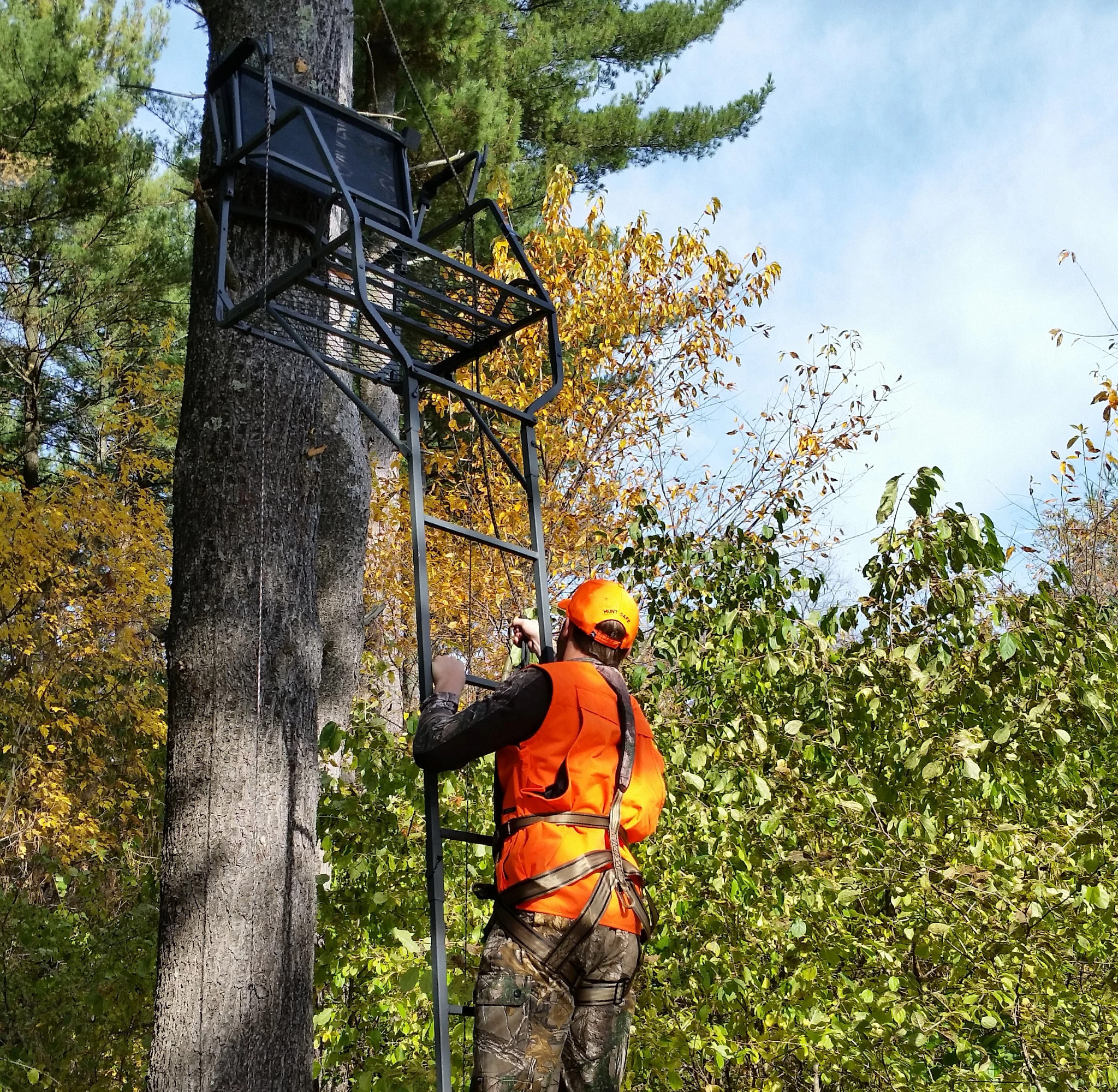Contact: Ashley Van Egtern, DNR Hunter Education And R3 Program Specialist
Ashley.VanEgtern@wisconsin.gov or 608-513-9625
DNR Urges Hunters To Use Treestand Harnesses This Fall
Follow Treestand Safety Tips For A Safe Season
 Hunters should always use a full-body harness, also known as a fall-arrest system, when hunting from a treestand.
Photo credit: Wisconsin DNR
Hunters should always use a full-body harness, also known as a fall-arrest system, when hunting from a treestand.
Photo credit: Wisconsin DNR
MADISON, Wis. – The Wisconsin Department of Natural Resources (DNR) reminds those participating in the upcoming deer hunting season to use treestands safely.
According to surveys, one-quarter of bowhunters have experienced a fall or near fall from an elevated stand. However, less than half of Wisconsin deer hunters use a safety harness every time they climb.
Hunters should include harnesses in their routine if they plan to hunt above the ground regardless of hunting with a ladder stand, a tower stand or a hang-on stand. Published research indicates risky climbing behavior can catch up with hunters the longer they hunt.
Hunters should always use a full-body harness, also known as a fall-arrest system. Hunters should also follow the basic rules of treestand safety:
- Connect your harness to your tether line and keep your tether line short.
- Always have three points of contact while climbing into and out of the treestand: Two hands and one foot or two feet and one hand at all times.
- Always use a haul line to raise and lower your unloaded firearm or bow into and out of the stand. You can also use a separate haul line for other things, like a heavy backpack.
- Use a lifeline when climbing up and down. The lifeline keeps you connected from the time you leave the ground to when you get back down.
- Be sure to let someone know where you'll be hunting and when you expect to return.
- Carry a cell phone to call for help if you are injured after a fall.
Hunters should use situational awareness in addition to following the basic rules of treestand safety. Always select a tree that is substantial enough to support your weight. Check your equipment before use, making certain lines are intact, your harness fits and is absent of snags and tears that could jeopardize the functionality. Also, be sure to inspect your stand to ensure it does not have any missing components or broken features.
Ahead of the fall season, hunters are also encouraged to participate in the Treestand Manufacturers Association Safety Course, a free interactive course that takes 15 minutes to complete.
To learn more about treestand safety, visit the DNR Treestand Safety webpage.

